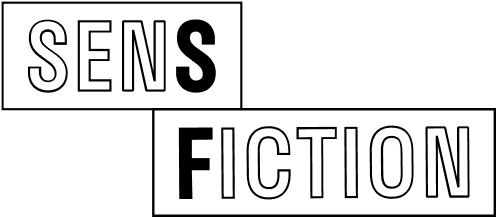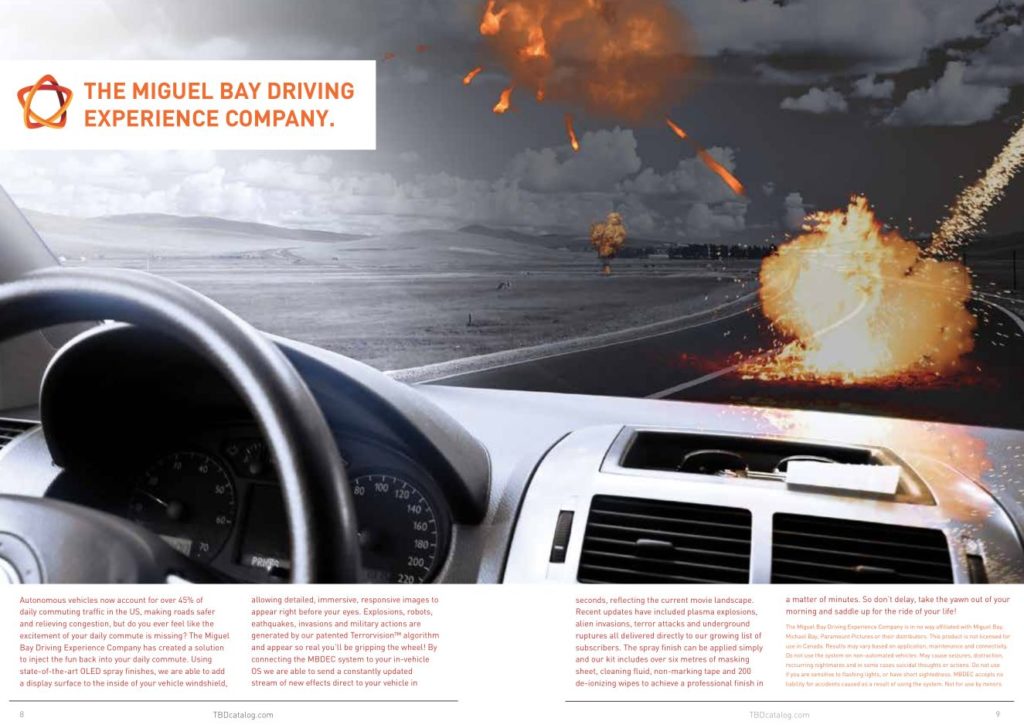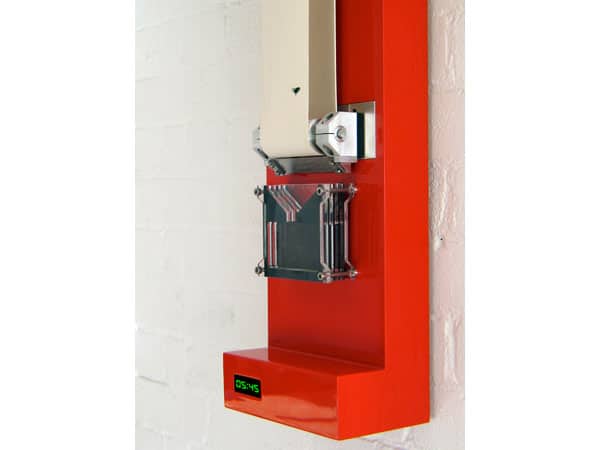




Associated curator
University Researcher / Co-founder of Next Future Laboratory
Nicolas Nova is an ethnographer and design researcher, working both as co-founder of The Near Future Laboratory, a design fiction studio based in Europe and California, and Associate Professor at the Geneva School of Arts and Design (HEAD – Genève) where he teaches anthropology of technologie, design ethnography, digital cultures and design fiction. He is also associate researcher at medialab SciencesPo Paris.
DESIGN FICTION: bringing tomorrow to life
On a side street in Shanghai, amid a labyrinth of small shops, a repairman with a patchy beard collects connected objects. This morning, he welcomes an Italian client who brings him an uncooperative coffeepot, and he says to him, “There are people who raise children, others who train animals…me, I train objects.” The shop owner then shows him how to manage all these so-called intelligent appliances. On the floor, a Roomba vacuum cleaner receives a few blows with a stick to make it move better, and a fan is rewarded (or punished) if it behaves the way it’s supposed to. Located in a future so near that it seems close to us, the video Teacher of Algorithms presents the everyday life of a new profession that appeared with the widespread use of connected objects. Commissioned by the university research group Thing Tank, this short film describes the tips and activities of an “algorithm trainer”, and in doing so, teaches us about the advent of an entire economy based on contemporary digital appliance repair, a domain neglected by the entrepreneurial and industrial fields, which prefer all that’s new over sustainability…as explored by the Near Future Laboratory with its TBD Catalog created in 2014, which consists of a collection of future products that may very well exist in the short term, from drone dog walkers to novels automatically generated by intelligent programs, and eco-friendly, seed-based raw materials for 3D printers. It all comes in the form of a mail-order catalogue, printed on paper, with each product presented along with a description, its dimensions, price, and even, as it should be, an order form at the end of the catalogue. Some products seem commercially viable, and other seems like gimmicks, as in a traditional catalogue.
These ways of bringing technological and social shifts to life, of demonstrating its implications for everyday life, using an accessible format (a catalogue, a narrative video) illustrate a design-specific manner of questioning our relationships with technological objects: design fiction. And even if there is a whole tradition of technological storytelling, both in science fiction and in the many forms of the concept of progress within the positive sciences that it is often associated with, the purpose of projects such as the Teacher of Algorithms or TBD Catalog is less about celebrating new technology (or the fears it creates), and more a matter of questioning the orientation or relevance of various changes on the horizon. Hence the choice of a realistic representation of technological possibilities, either through a familiar format, to make sure readers understand the consequences of technological objects, or through the presentation of the most everyday, banal challenges they face (breakdowns, gimmicks).
This work, carried out over the past dozen years or so by groups of design-fiction practitioners, is rooted in a stance by designers looking to go beyond the conventional approach of their discipline. Their goal is not to design a product or service to sell, nor to resolve a specific problem. By focusing on an accessible and familiar presentation of trajectories on the horizon, these designers show us certain blind spots (maintenance and ways to fix breakdowns, in the Teacher of Algorithm), or possible, and varyingly desirable, scenarios (the product range in the TBD Catalog). But what’s the point? It’s less about selling or enchanting us than stimulating discussion around the merits and relevance of technological trajectories, or even imagining alternate possibilities. And none of it offers a normative, unified vision of what things should be. And this, by the way, is precisely a consistent factor in design fiction projects, which, contrary to science-fiction films or novels, do not offer a storyline, per se. By offering testimonials on new features or behaviors, these objects allude to potential trajectories, and, in doing so, hint at possible new worlds.

This speculative, stimulating role for design in society is not necessarily something new. If we look back at the genealogy of design and architecture, we become aware of the close ties that these two fields maintained with foresight and critical thought on the future. Archigram, a group of British architects and designers in the 1960s, just like Superstudio, a team of Italian architects of the same era, may be considered the most important figures in this type of approach. The work of these individuals, which rarely produced anything for a mass audience, is fascinating due to its dual nature: a critique of the present day, connected to an exploration of possible futures. In opposing the alienation of industrialization and the advent of consumption-based societies, these objects and structures sought to generate new utopias. Instead of meeting the requirements of clients, these creators were committed to using all their skills to envision avant-garde paths forward and to using the forms of their era to achieve this: models of hypothetical projects, comic strips describing their reappropriations, technical drawings, posters, exhibitions…These objects were designed with a constant eye to comprehensibility, to encourage citizens to make these visions their own. Since they weren’t actually built, the value of their work resides more in this vein than in its creation itself.
This radical architectural approach, which was pursued in the 1960s and 1970s, experienced a resurgence around fifteen years ago in the fields of object and digital design, with, in particular, the work of Anthony Dunn and Fiona Raby, a pair of English designers then teaching in the Design Interactions department of the Royal College of Art in London. Just like the architects mentioned above, their goal was to offer speculative designs to “question rapid sureties, presuppositions, and things taken for granted in terms of the role of objects in our everyday lives. It’s more a matter of attitude than anything else, of taking a stance, rather than of a specific method.”. And it is indeed design we’re talking about here, because the pieces offered are always plausible, potentially imaginable within the given context, and are often functional: a Faraday chamber created to protect oneself against electromagnetic waves (Dunne & Raby), robotic, carnivorous furniture that produces electricity (Auger-Loizeau), a photographic device that captures the appearance of clouds featuring facial shapes (Neil Usher), machine/parasites that can “fly” using the energy from objects nearby (Michail Vanis), etc.

Design fiction, as proposed by my colleague Julian Bleecker from the Near Future Laboratory, echoes these radical architectural and critical-design approaches. At the intersection of film-prop design, popular culture, and foresight, the term refers to the creation of prototypes of fictional, plausible objects that seek to express future realities and explore new imaginary visions of the future. Undoubtedly less tied to the aesthetic codes of industrial and applied arts and design, design fiction corresponds to the use of familiar interfaces to embody scenarios in the most realistic way possible, to express future realities and explore new visions of the future. A catalogue of fictional objects, video shorts showing a day in the life of an individual, signage, fake magazines, and fictional medical packaging are produced, not to play a narrative role in a piece of fiction, nor, clearly, to be sold, but rather, to materialize, provide food for thought, and create dialogue on future trajectories.
This type of role-playing, and the use of formats that are very similar to those in popular culture (catalogues, decks of cards, faux manuals) may lead us to think that these are just amusing, futile stunts, but that would be a simplistic view of things. The goal here is not to make fun of nor trick participants, but rather to question the dissemination of technology in our everyday lives, and to make us think about alternative visions. Contrary to the quasi-medical futurological forecasts shown in the videos of major industrial firms, the idea is not to convince us that a given technology will soon be everywhere. Nor is it a matter of generating new needs. The goal of designers interested in these approaches resides in the criticism and deconstruction of these futures presented as self-evident, such as flying cars, home automation, humanoid robots, or artificial intelligence. Like works of science fiction in their philosophy, but without their narrative dimension, design fiction presents some of our concerns: what will our everyday life look like in the world of tomorrow? How will technology be used? What frustrations and social problems might it engender? Or, more broadly, what will be its sociological, anthropological, and political implications?
Creators of design fiction have thought about responses to these questions, in a variety of fashions: through satire or commentary, “euchronias” or absurd retellings, utopian tales, or warnings about the advent of this or that shift. In doing this, these designers push the boundaries of technology and social shifts to the extreme, to demonstrate the possible consequences. They extrapolate, using their keen observational skills on current practices, by asking, for example, what would become of a certain misuse of recent technology, or by imagining the mainstreaming of a certain social practice. Depending on the project, the explanations addressed by these designers are just as significant as the form in which they are presented: an extrapolation from current conditions, and the subtle exaggeration and amplification of contemporary phenomena are the many drivers for exploration offered by design fiction, with varying degrees of humor and irony. Like works of science fiction, certainly, but with a distinct objective of fostering debate and generating reactions, while revealing certain subtle issues to the greater public, companies, and governmental organizations.